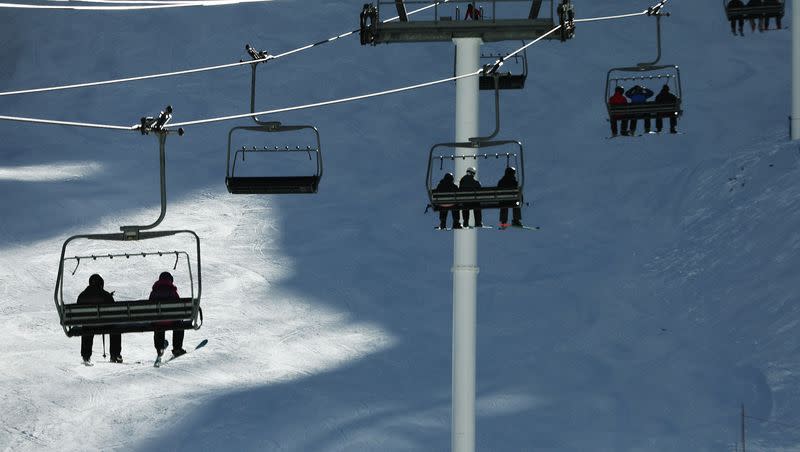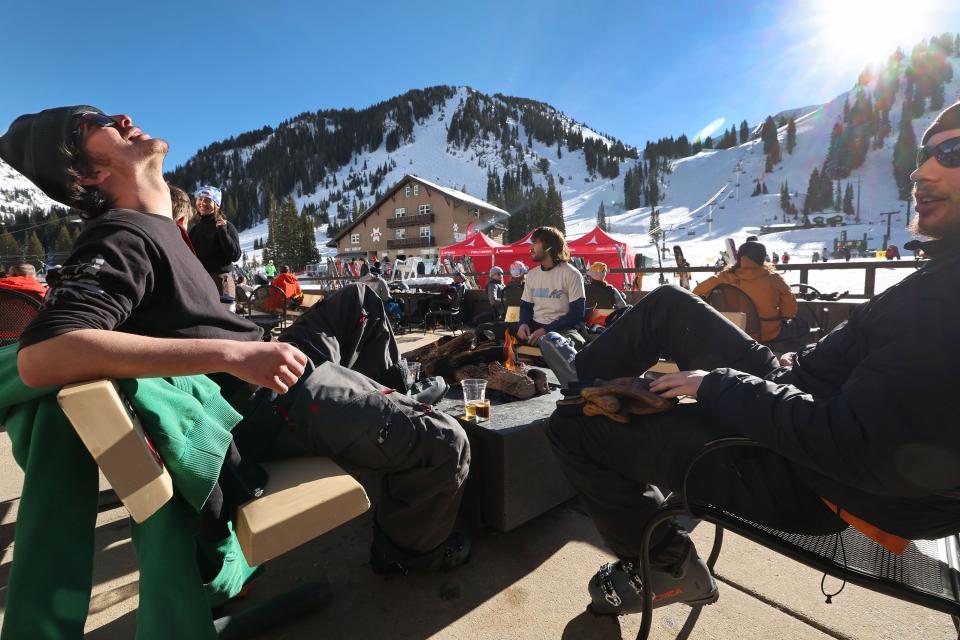Skiing in Europe seems cheaper than in the U.S. — but is it really?

From lift tickets to gear rental to ski lessons, the cost of skiing has been climbing in Utah and across the country, sending people looking for deals, sometimes even in Europe.
“Over the years, I’ve seen the skiing costs creep up slowly, including the season’s pass and day tickets,” said Pasindu Wewegama, a travel adviser who lives in Washington, Utah, said.
People are looking to cut costs on skiing, Wewegama said, which for some means driving longer distances to smaller ski resorts and scouring the internet for deals. Cheaper day passes in Europe can look attractive to people who don’t hold season passes. But here’s what to consider before booking that flight to France or Austria.
Why is skiing getting more expensive?
Increasing costs in the U.S. are tied to the consolidation of resorts under corporations within the ski industry. Since the 1970s, when savvy businessmen replaced the mountaineers who started some of the biggest resorts, skiing has become less of a sport dominated by “ski bums” and more of a luxury pastime.
Today, giant ski operators Vail Resorts and Alterra Mountain Company cover nearly 50% of the North American ski market, according to the Financial Times.
These changes in management and the focus on season passes have contributed to the rising costs, industry experts say. “The current model incentivizes multiple return visits over the daily ticket — it’s similar to an airline model,” said Adrienne Isaac, director of marketing and communications at the National Ski Areas Association, based in Colorado. For those just wanting to ski for a day or two, the barrier to entry is higher, she said.
Like any other business, skiing is also susceptible to inflation and broader economic shifts. “Skiing is a business and an industry that plays into these macro trends,” Isaac said.
But even with increasing ticket prices, skiers continue to crowd the mountains across the country. In the 2022-2023 season, U.S. ski resorts saw about 64 million skiers, which was 6% more than the previous season, according to NSAA data.
Is it cheaper to ski in Europe?
The soaring prices in the U.S. has some skiers eyeing European resorts, where the experience can seem a fraction of the cost stateside.
Michael Brichford, who has skied both in the Rockies and in the Alps, chose to travel to Montgenèvre in France to ski last March, partly because of the cost. “It came out to about $40-$60 a day as opposed to $200 in the U.S.,” Brichford, who lives in Texas, told Deseret. “Skiing in the U.S. has gotten so absurdly expensive, especially compared to Europe.”
Of course, he also had to pay for his flights and other travel expenses.
When it comes to day passes, though, the price difference is hard to overlook. For instance, the day pass at the luxury Zermatt in Switzerland comes out to $96 in U.S. currency, and it’s $72 at Chamonix. That’s compared to about $160 for a day pass at Alta ski resort in Utah and $269 at Vail.
The prices for season passes, however, aren’t that different — and they can be even more in Europe: 1,260 euros ($1,370) for a season pass Mont-Blanc in France is comparable to Alterra’s Ikon pass at $1,309 and $969 for Vail’s Epic pass, both of which include some of the European resorts and have early-bird pricing.
Related
“Skiing (in the U.S.) has actually gotten less expensive with the rise of seasonal passes,” said Alison Palmintere, director of communications for Ski Utah, a part of Utah Ski & Snowboard Association. “For the price of what it used to cost to ski at one resort, for the same price or less, you can ski at many different resorts in Utah and across the U.S. and Canada and Europe.”
The U.S. and European resorts have different models of management, which includes government subsidies in Europe, according to Isaac. “Everything from insurance to infrastructure and land management — the business models are completely different,” she said.
Why skiing remains popular
On ski trips in Europe, Brichford said he enjoyed breathtaking views, the leisurely lunches at the chalets, the vertical drops and unexplored terrain of the Alps — it’s a different skiing experience than in the Rockies, he said. “It’s kind of a playground, in a sense, if you’re good (at skiing), you can go wherever you want,” he said about Europe.
But the time traveling abroad and the jet lag that comes with it are worthy considerations, he acknowledges.
And while the cost is a significant part of planning a vacation trip, it’s one of many factors in the mix. For the majority of Park City skiers, who tend to come from out of state, the convenience of skiing is top of the list, according to Dan Howard, vice president of communications at the Park City Chamber of Commerce. “It’s about how quickly you can get to your skiing destination and be back at work,” Howard said. The city’s luxury hotel brands are another reason why many U.S. skiers flock to Park City, he said, particularly from New York City and Los Angeles.
Familiarity with a place is what brings people back, regardless of inflation and shifts in pricing, he explained. “People are comfortable skiing where they know and Park City is very familiar and convenient for skiers from New York and Los Angeles,” Howard said. And those who experienced Utah’s ample snow last year are likely coming back this year. “Often, the experience of the most recent ski season will impact where people choose to ski,” he said.
After the pandemic especially, the broader cultural shift toward health and wellness has been a boost for winter sports, Isaac said. “Skiing has benefited from that too,” Isaac said.

How to save on skiing in Utah
To all the ski enthusiasts on a budget — be not dismayed. There are cost-saving hacks for skiing in Utah, according to local experts. Ski resorts in Utah offer programs for families — for instance, Ski Utah offers a Student Passport for fourth, fifth and sixth graders, who get three days at each of Utah’s 15 resorts for $85. At Snowbird, a Kids Freeloader Pass allows any adult season pass holder to bring another skier under 18 years old for free. And beginners can take advantage of the Learn-to-Turn group lesson at Beaver Mountain for $90.
Picking off-peak times — during the week and in the afternoons — can be another cost-efficient strategy. “I’m aware that it’s a privilege to ski on a weekday and may not be a reality for a lot of people,” Isaac said. But if you can swing it, check out Alta’s Sunnyside at 3 program; skiers get a six-pack lift for 90 minutes for $19-24 per day.
What’s unique about Utah is the many different kinds of ski areas to choose from, Isaac explained. “Small and medium ski areas are so important to this industry, because they can be great entry points to get people into the sport,” she said.
And don’t forget the gear: Ski Utah’s Palmintere recommends checking local gear swaps in the fall. Ski rentals offer multiseason rentals for kids to keep up with growth spurts. “There are a lot of ways to save if you’re motivated to ski — it’s definitely possible on a budget,” said Palmintere. Brichford echoes the sentiment: “You have to know how to navigate the system to get a good deal.”

